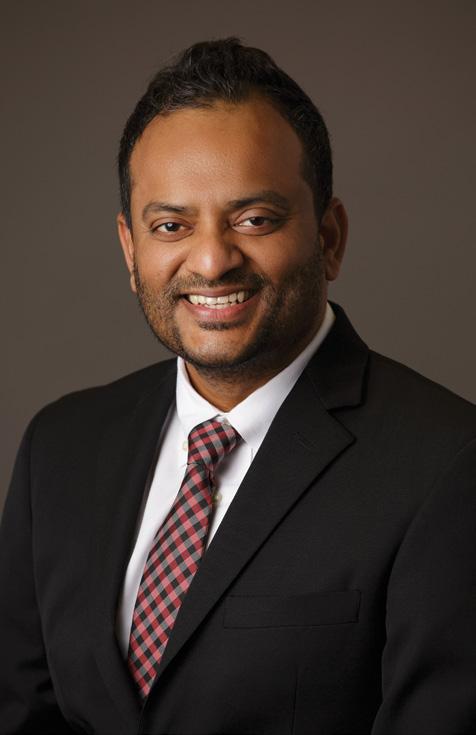
4 minute read
AAOF YEAR IN REVIEW 2019
$13.1 MILLION FUNDED IN AWARDS SINCE 1994
258 RESEARCH AWARDS SUPPORTED
249 FELLOWSHIP AWARDS SUPPORTED
OVER 100 PUBLISHED ARTICLES & ABSTRACTS 258 RESEARCH AWARDS SUPPORTED

– VEERASATHPURUSH ALLAREDDY, BDS, MBA, MHA, PhD, MMSc UNIVERSITY OF ILLINOIS AT CHICAGO DEPARTMENT HEAD OF ORTHODONTICS BRODIE CRANIOFACIAL ENDOWED CHAIR PROFESSOR

PAST AWARD WINNER SPOTLIGHT
F. Kurtis Kasper, PhD Associate Professor, University of Texas School of Dentistry at Houston
AWARD - 2018 Fred and Dianne Garrett Biomedical Research Award
Recent advances in additive manufacturing technologies present the potential for fabrication of esthetic orthodontic brackets in-office via 3D-printing using materials cleared for intraoral use. Direct fabrication of esthetic brackets via 3D-printing could revolutionize orthodontics by enabling clinicians to design and fabricate customized brackets that satisfy patient demands for esthetics in an on-demand fashion. At the same time, in-office design and fabrication of brackets via 3D-printing would support increased clinician control and operational efficiency in orthodontic practices. As clinical cases of 3D-printed brackets emerge in the literature, a clear and urgent need exists to investigate key properties of 3D-printed brackets, including their mechanical and color stability as a function of time, to inform the orthodontic community regarding potential advantages and limitations. Accordingly, the overall objective of this project was to evaluate the mechanical and color stability of 3D-printed orthodontic brackets.
The data collectively demonstrated the proof-of-concept of applying biocompatible resins toward the fabrication of orthodontic premolar brackets via 3D-printing and the feasibility of the methods applied in characterizing the shear bond strength of the brackets bonded to enamel and the color stability of the printed materials. The data suggests that clinically sufficient shear bond strengths can be achieved with 3D-printed brackets, and that the shear bond strength depends on the material used in the fabrication. Additionally, the data suggests that the color stability of the materials investigated may not be suitable for application in fabrication of esthetic orthodontic brackets.
–F. Kurtis Kasper, PhD

PAST AWARD WINNER SPOTLIGHT
Kyungsup Shin, DMD, MS, PhD Assistant Professor, University of Iowa Department of Orthodontics
AWARD - 2019 Orthodontic Faculty Development Fellowship Award
Post-traumatic osteoarthritis (PTOA) on TMJ is one of the most challenging degenerative joint disorders resulting in facial asymmetry, malocclusion, and limited masticatory function. This degenerative disorder, if not intervened in a timely manner with conservative/non-surgical approaches, may require surgical procedures such as arthrocentesis, arthroscopy, discectomy, condylotomy, and/or joint replacement. However, due to its multifactorial etiology, the incidence of PTOA on TMJ related to trauma to the mandible is difficult to determine.
Fracture energy has been utilized previously as an objective method for assessing fracture severity and predicting PTOA risk in the lower extremities, but not yet in the craniofacial bones.
The objectives of this project are to validate that CBCT can be used to compute an objective fracture energy, and to characterize the range of fracture energy scores and their distribution over different anatomical regions of the mandible, which can be utilized as a predictive information for PTOA development.
Dr. Shin anticipates fracture energies will be well characterized by his research team’s new methodology. Once the outcomes of this study are successfully achieved, Dr. Shin plans to expand his study to investigate potential association between the severity of fracture (i.e. fracture energy level) and occurrence of PTOA in TMJ.
Benefit to Orthodontic Education
The knowledge gained from his project could potentially be applied across a range of applications including orthodontic care for the patients with past medical history of trauma, post-traumatic craniofacial surgery, dentoalveolar bone defects, and condylar degeneration.
–Kyungsup Shin DMD MS PhD

